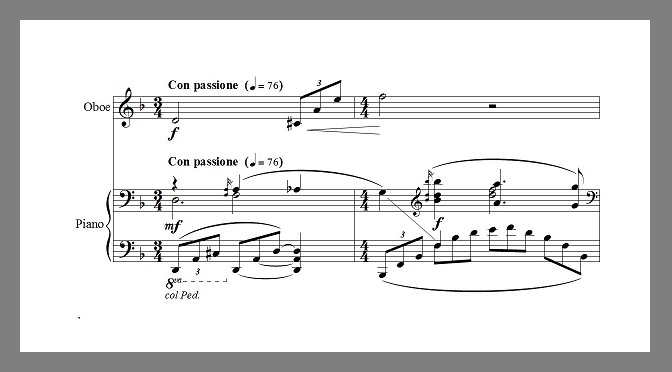Fluctuating Meters
My Lament for Flute and Piano was inspired by early Baroque opera and by the ideas of the Florentine Camerata that gave rise to that new musical genre. In the late sixteenth century, the theorists of the Camerata argued that music should imitate impassioned speech, a notion that was to be embodied most particularly in the new device of recitative in the first operas a few decades later. In the first seven bars of the Lament, the flute presents an instrumental version of a recitative, with the irregularities of human speech suggested by repeated meter changes (mixing 4/4, 3/4, and even 5/4), along with tempo changes, irregular rhythms, and dynamic changes.
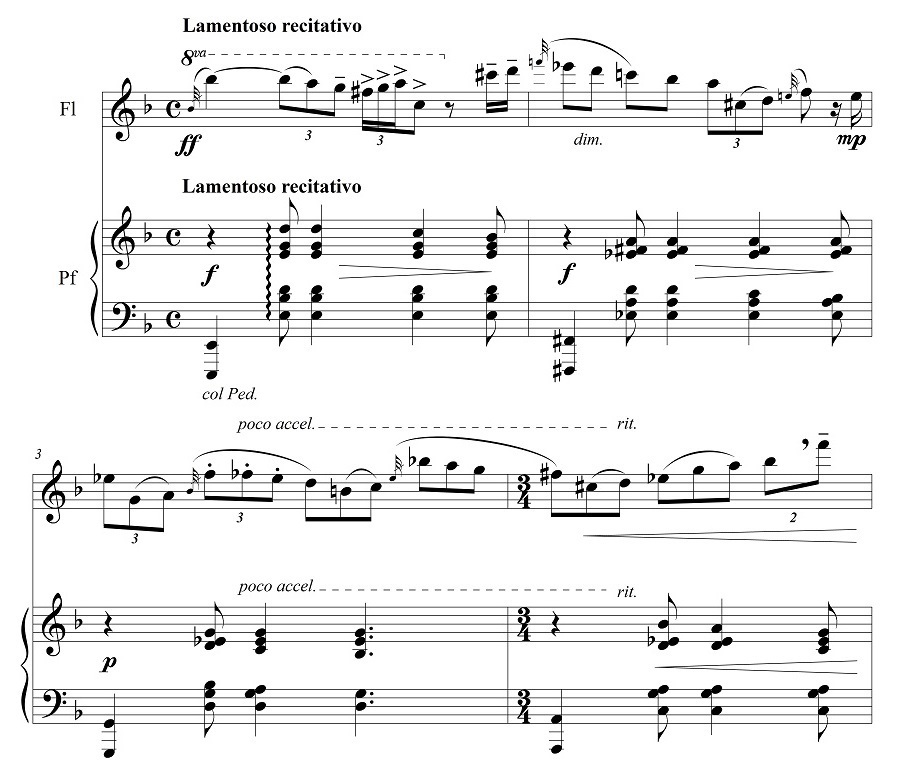
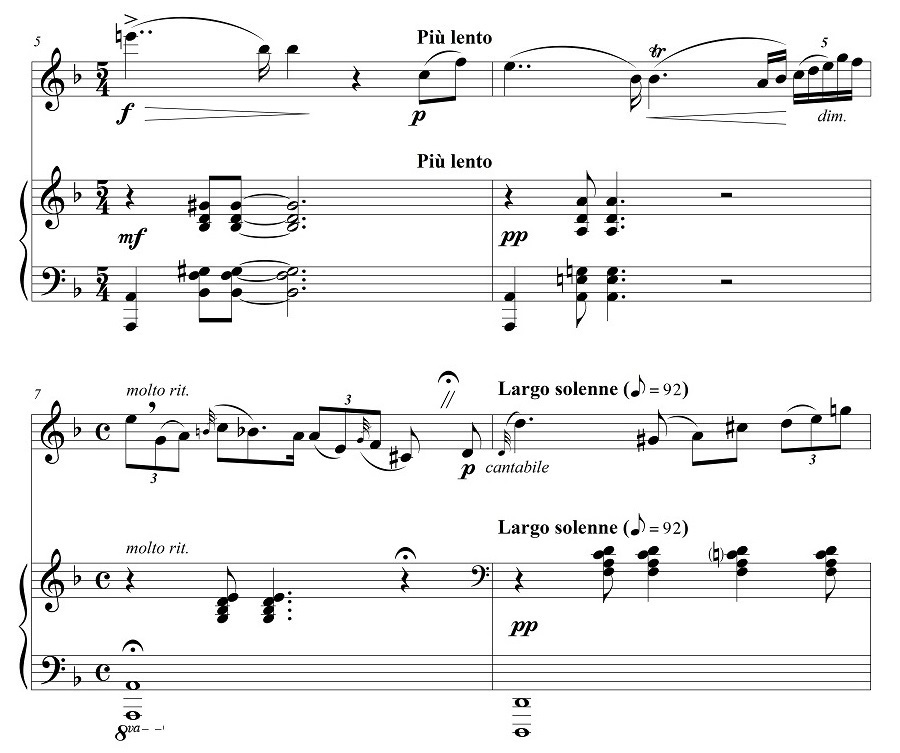
The constant fluctuations in meter, tempo, and dynamics suggest great bursts of passion and lamentation. Only at the Largo solenne (bar 8), where an aria-like melody begins in a regular common-time meter, is some semblance of metric order established.
Similarly, frequent meter changes contribute to a sense of temptestuous passion in the opening of my Sonata for Oboe and Piano.
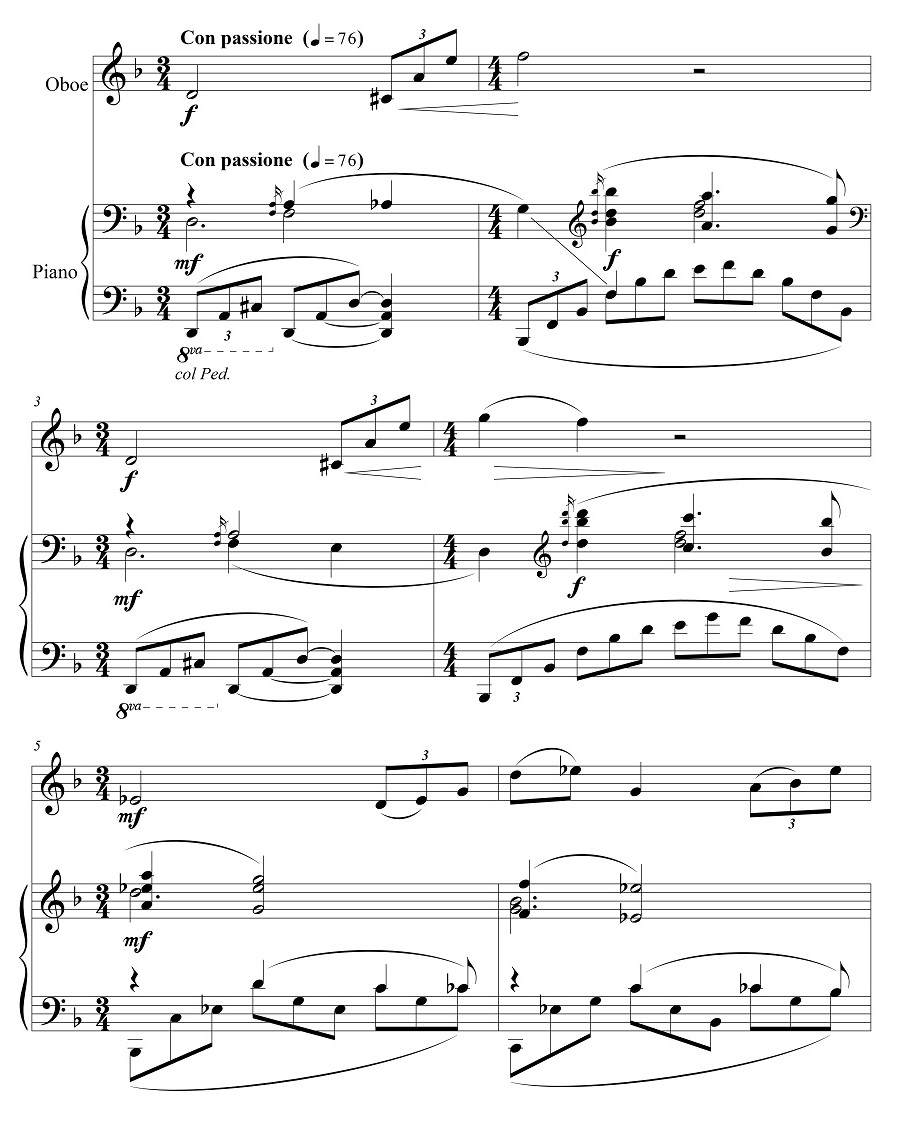
Notice how the changes between 3/4 and 4/4 meter create a sense of restlessness. Note also the large leaps in the oboe melody and the shifts back and forth between low and high registers in the piano part.
A few bars later, the restlessness gives way to relative calm with the entry of the contrasting secondary theme.
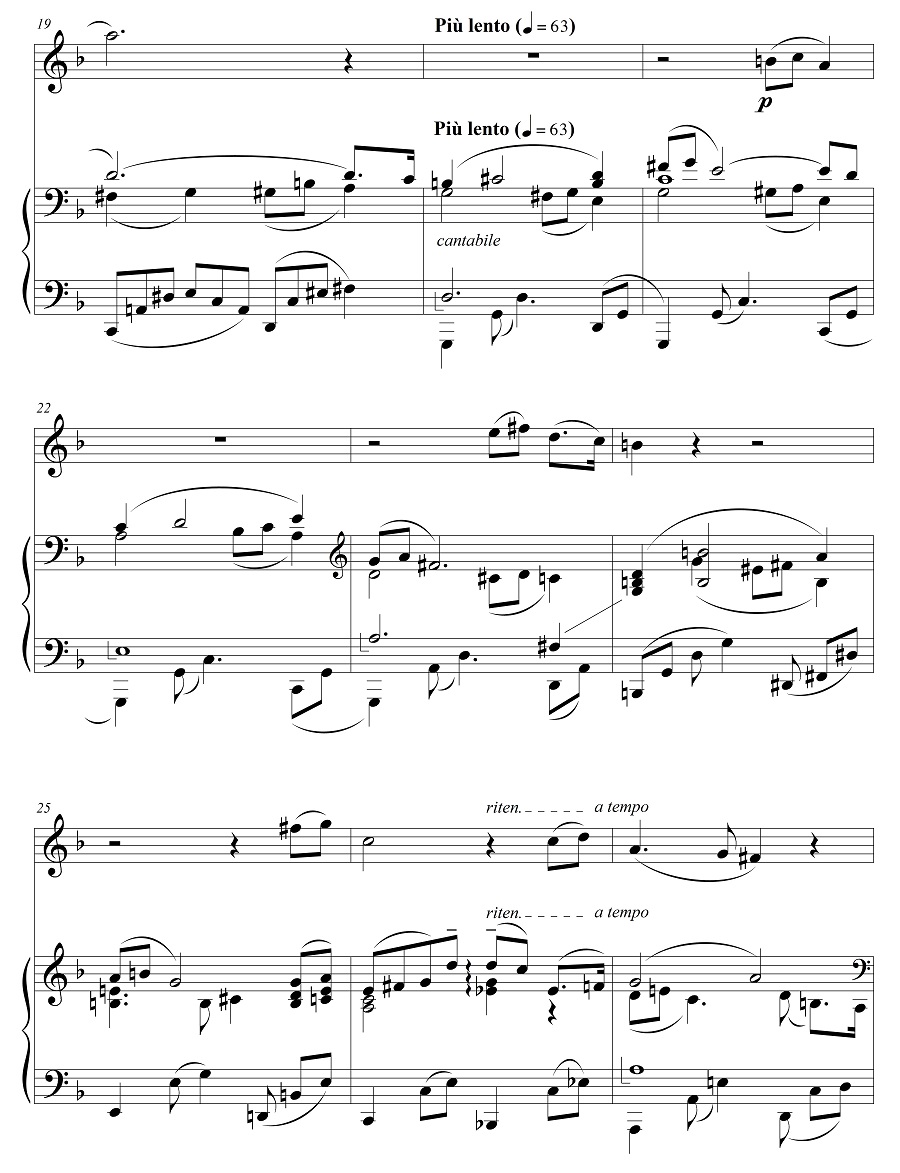
This melody is still infused with emotion, but of a much more gentle character. The meter is a regular common (4/4) time, and even at a hypermetric level, the melody organizes itself into regular four-bar phrases — all supporting a sense of simplicity and peacefulness that I think might be characterized as “pastoral.”

